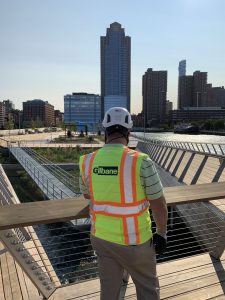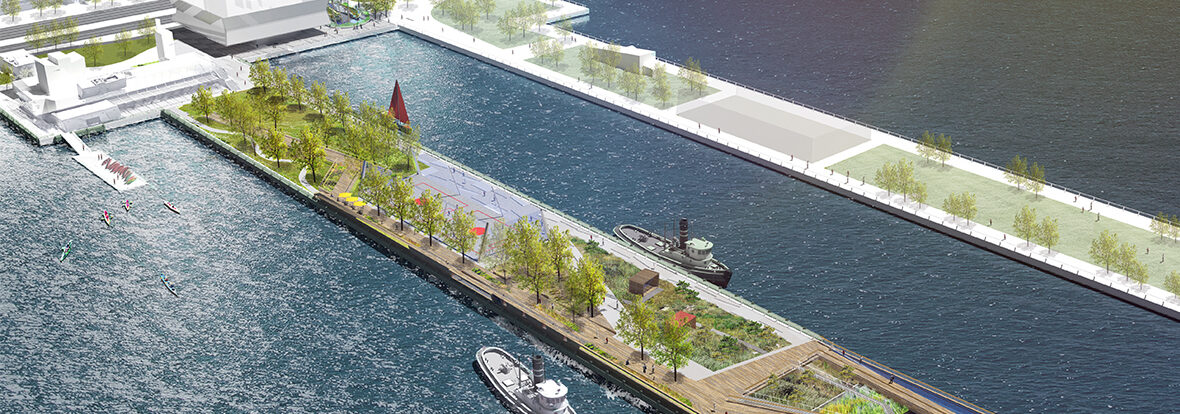Resiliency can be created through both structural, hard material and soft or organic material. These materials provide critical support against erosion, while reducing flooding and helping to maintain shorelines. Additionally, organic material can create sustainable benefits by positively impacting the ecosystem, including supporting aquatic habitat and improved water quality.

New York City’s new Pier 26 in Hudson River Park offers a unique approach by creating new wetlands and tidal pools 800 feet out from the seawall into the river. The project, which is designed by OLIN, with collaboration from Mueser Rutlege Consulting Engineers and Biohabitats and construction managed by Gilbane Building Company, features a reinforced concrete ecological platform built into the Hudson River within the tidal zone. The platform consists of precast concrete panels and a steel and concrete aerial walkway cantilevered out over the Hudson River. The platform was planted with a diverse assemblage of plantings acclimated to a saltwater environment. To create new wetland plantings, 96 durable polyester modules were seeded and 1,300 granite boulders between 0.5 tons and 9 tons were set to act as a wave break to protect the ecological habitat. Additionally, the Pier project utilized a combination of oyster cages and eel skirts to promote marine life.
While weather conditions are always factors for consideration in construction, external conditions require even greater planning in marine construction. Diver work may need to be accomplished off hours when winds and boat traffic are minimal. For example, at the Pier 26 project, the heavy concrete panels had to be set with a 1,000 ton crane on a floating barge.
The Pier 26 project showcases the opportunity to be inventive, sustainable, and resilient. Given the increasing risks posed by climate change, it’s important that we deploy imaginative solutions.


One Reply to “Marine Construction’s Resiliency Opportunity”
Marcus Partlow
Great article Keith!! Thank you for sharing your knowledge and experience! Good looking project!
Comments are closed.